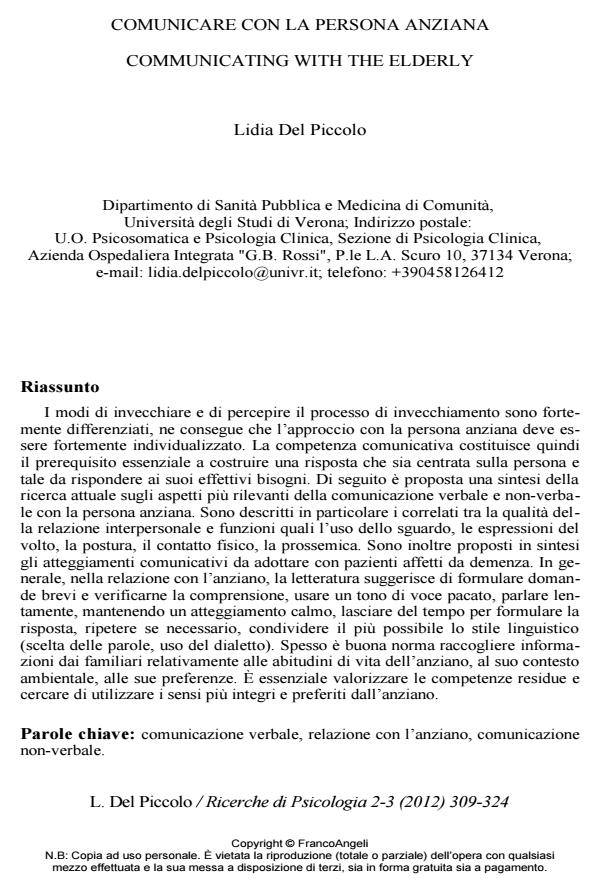Communicating with the elderly
Journal title RICERCHE DI PSICOLOGIA
Author/s Lidia De Piccolo
Publishing Year 2013 Issue 2012/2-3
Language Italian Pages 16 P. 309-324 File size 235 KB
DOI 10.3280/RIP2012-002011
DOI is like a bar code for intellectual property: to have more infomation
click here
Below, you can see the article first page
If you want to buy this article in PDF format, you can do it, following the instructions to buy download credits

FrancoAngeli is member of Publishers International Linking Association, Inc (PILA), a not-for-profit association which run the CrossRef service enabling links to and from online scholarly content.
Old people are very different, therefore communicative styles have to take into account an individualized approach to accomplish personal needs and actual necessities. This paper resumes current research on verbal and nonverbal communication with old people. Correlations between relational aspects and non-verbal behaviors such as glance, smile and facial expressions, posture, touch and proxemics are presented with reference to research data. Moreover, a synthesis of communicative behaviors to adopt with cognitively impaired patients and those affected by dementia are presented. When communicating with an aged person it is useful to ask brief questions, verifying his/her comprehension, to use a calm tone of voice, to talk slowly, maintaining a calm attitude, leaving all the time needed to give the response, to repeat if needed, adopting the same type of words and language (i.e. dialect) expressed by the elderly. It is often useful to gather information from relatives regarding the life habits, the environmental context and the preferences of the elderly. Finally, enhancing the skills and trying to use the most intact remaining senses may be considered as a valuable approach.
Keywords: Aged, elderly, verbal communication, non-verbal communication.
Lidia De Piccolo, Comunicare con la persona anziana in "RICERCHE DI PSICOLOGIA " 2-3/2012, pp 309-324, DOI: 10.3280/RIP2012-002011